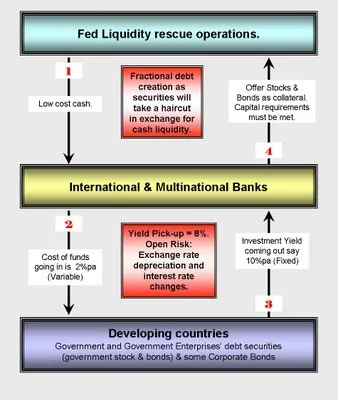In the long run, it is best to think of more sustainable solutions and, in this regard, the levers are very diverse appointment of quality managers in the contributing entities, workflow validation of customer data, standardization of concepts, comparisons with external sources, management of several criteria of uniqueness. The possible solutions are many but their cost, period of implementation and impact on data quality is variable. However, the prioritization of these actions is often subjective: some effects more "visible" are given priority while others are ignored because their quality impacts are unknown.
The success of the business plan requires a continuous improvement in performance. It should be laid down in processes that involve the third party repository, a real cornerstone of the IF bank. Based on the quality approaches used in industry, the virtuous cycle is divided into five phases: definition of indicators and quality objectives of the standard, indicators measuring, analyzing results, identifying actions to improve the quality control of the effect of implemented solutions. We propose in this article, to limit ourselves to the first two phases that we consider most important.
The definition of indicators based on the combination of an empirical, research-based elements of non-quality in the device in place, and a theoretical approach, having as a starting point to identify key parameters management customer risk:
To invest in the improvement actions that correct the non-quality aspects of the most sensitive, the first step is to build a balanced scorecard indicators are most representative. It is an indispensable asset to the achievement of a critical diagnosis and appropriate vis-à-vis business strategies (risk, marketing, sales ...) defined. While some indicators can be retained only for statistical purposes, the others must be action-oriented: this means they must be involved in a lens quality (which will result in the definition of alert thresholds or levels of expected results ...) and an action plan to achieve the objective. The role of each business management and / or SI concerned to arrive at the expected level of quality must be so in a charter previously defined: it is one of the key success factors of the process.
The success of the business plan requires a continuous improvement in performance. It should be laid down in processes that involve the third party repository, a real cornerstone of the IF bank. Based on the quality approaches used in industry, the virtuous cycle is divided into five phases: definition of indicators and quality objectives of the standard, indicators measuring, analyzing results, identifying actions to improve the quality control of the effect of implemented solutions. We propose in this article, to limit ourselves to the first two phases that we consider most important.
The definition of indicators based on the combination of an empirical, research-based elements of non-quality in the device in place, and a theoretical approach, having as a starting point to identify key parameters management customer risk:
To invest in the improvement actions that correct the non-quality aspects of the most sensitive, the first step is to build a balanced scorecard indicators are most representative. It is an indispensable asset to the achievement of a critical diagnosis and appropriate vis-à-vis business strategies (risk, marketing, sales ...) defined. While some indicators can be retained only for statistical purposes, the others must be action-oriented: this means they must be involved in a lens quality (which will result in the definition of alert thresholds or levels of expected results ...) and an action plan to achieve the objective. The role of each business management and / or SI concerned to arrive at the expected level of quality must be so in a charter previously defined: it is one of the key success factors of the process.
























